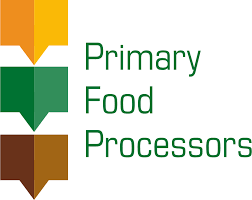Articles
Temps de lecture : 3 min
10/02/2023
Food security: breaking the taboo of stocks

From China to Latin America via the Mediterranean basin, ancient civilizations have traditionally fought against food insecurity due to climatic hazards and armed conflicts, by constituting and managing reserves of essential foodstuffs. Similarly, consumers faced with crisis situations have the first instinct, which is sometimes totally irrational, to stock up on products they imagine they might run out of. Thus, precautionary stocks and reserves are major components of any policy or behavior aimed at security of supply. Applied to the energy sector, this dimension is absent from the current reflections carried out at European level for agriculture and agri-food. The recent work of the Commission testifies to this.
To respond to the difficulties encountered during the Covid-19 pandemic and in the weeks following the Russian invasion of Ukraine, the Commission launched in March 2022 a body bringing together experts and representatives of the Member States under the name of « European food security preparedness and response mechanism ». So far, reflections on stocks have not been introduced in these works.
At the beginning of January 2023, a document produced by the Commission services entitled « Drivers of food security« , presents a detailed analysis of the determining factors of food security. The authors conclude that the European Union is not immediately exposed to the risk of unavailability of food products, while noting the increase in the share of the most vulnerable populations from the point of view of accessibility, estimated at 18% of the European population in October 2022. Moreover, regarding the four pillars of food security (availability, accessibility, quality and stability) the study admits that their combined effects cannot guarantee medium and long-term security. Based on a rich bibliography, the document provides an in-depth analysis of 25 factors by applying the same reading grid to each of them: general context and challenges, 2022-2024 inventory, outlook for 2030, international dimension, and possible interactions with other factors.
Paradoxically, the term stocks or reserves is totally absent from this review, which nevertheless aims to cover the entire subject. It is therefore necessary to wonder about the reasons for this avoidance, while the implementation of precautionary stocks in energy matters is part of the European arsenal to ensure the security of supplies. The remanence of the memory of public intervention stocks of the old CAP, which weighs on the debates on food security, seems a plausible hypothesis to explain the exclusion of storage solutions. However, the methods of managing reserve policies may differ from those managed exclusively by the public authorities. The most effective use public-private partnerships, involving dynamic management of reserves by companies in the sectors concerned. This is already the case for petroleum products in the European Union, as illustrated by the Swiss Reserve for agricultural, energy and pharmaceutical products, or more recently the strategic storage of certain products in Finland.
It is therefore time to break the taboo that affects the term stocks and consequently to give ourselves the means to resort to the constitution of reserves for products and sectors that depend on imports, with the aim of completing the panoply of tools that contribute to European food security.






